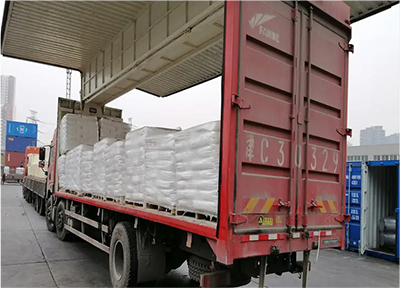
Okt . 21, 2024 19:14 Back to list
Assessing the Quality Metrics of Lithopone for Optimal Performance and Application
Lithopone Understanding Quality in Industrial Applications
Lithopone is a widely used white pigment that has gained significant attention in various industries, particularly in coatings, plastics, and inks. Composed of a mixture of barium sulfate and zinc sulfide, lithopone offers unique properties that make it an attractive alternative to titanium dioxide. However, the quality of lithopone can vary dramatically based on several factors, and understanding these factors is crucial for achieving optimal performance in end applications.
The Composition of Lithopone
Lithopone typically consists of about 30% to 70% zinc sulfide and barium sulfate, depending on the desired properties and application. The combination of these two components results in a pigment that not only provides excellent opacity and whiteness but also has superior durability and resistance to weathering. The manufacturing process can significantly affect the quality of lithopone. High-quality lithopone is produced through a multi-step process involving the precipitation of barium sulfide and zinc sulfate, followed by controlled drying and milling processes. Variations in these processes can lead to differences in particle size, distribution, and purity, all critical factors determining the pigment’s overall quality.
Factors Influencing Lithopone Quality
1. Purity of Raw Materials The quality of lithopone begins with the purity of its raw materials—barium and zinc compounds. Impurities in these raw materials can adversely affect the color, opacity, and stability of the final pigment. Hence, sourcing from reputable suppliers is essential to ensure consistent quality.
2. Manufacturing Process The production process plays a pivotal role in determining lithopone's quality. Techniques such as precipitation control, drying methods, and milling processes can influence the particle size and morphology. Smaller, uniform particles tend to provide better coverage and improved performance in end applications.
3. Particle Size and Distribution The particle size of lithopone impacts its performance significantly. Fine particles generally provide higher opacity and better dispersion in medium, making them more effective in coatings and plastics. Manufacturers often employ grinding and milling techniques to achieve the desired particle size distribution.
lithopone quality

4. Surface Treatment Surface treatments can enhance the performance characteristics of lithopone, including its compatibility with various resins and polymers. Treatments can modify the surface chemistry of the particles, improving their dispersion and stability in different formulations.
5. Storage and Handling The quality of lithopone can deteriorate if proper storage conditions are not maintained. Exposure to moisture, excessive heat, or contamination can lead to clumping and loss of performance. Proper handling and storage protocols are critical to maintain quality over time.
Applications of High-Quality Lithopone
High-quality lithopone is prized in various applications. In the coatings industry, it is valued for its excellent hiding power, chalk resistance, and durability—qualities that are essential for protective and decorative coatings. When used in plastics, lithopone offers an ideal balance between opacity and cost-effectiveness, making it a popular choice in manufacturing everyday items. Additionally, in the ink industry, lithopone provides vibrant whites and excellent printability, making it a preferred choice for a wide range of printing applications.
Ensuring Quality in Sourcing Lithopone
For manufacturers and formulators, it is imperative to ensure quality when sourcing lithopone. Before making a purchase, companies should conduct comprehensive tests on the pigment to assess its properties, including particle size, opacity, and stability. Additionally, working closely with suppliers who adhere to industry standards and maintain robust quality control processes can help secure high-quality lithopone.
Conclusion
In conclusion, lithopone is a versatile pigment with numerous applications across various industries. The quality of lithopone can significantly influence the performance of the end products, making it vital for manufacturers to understand the factors that affect its quality. By paying close attention to raw materials, manufacturing processes, particle size, and storage conditions, companies can ensure they are utilizing high-quality lithopone for their needs. As industries continue to evolve, the demand for high-quality pigments like lithopone will only increase, highlighting the importance of quality assurance in the pigment supply chain.
-
Advanced Titania TIO2 Solutions with GPT-4 Turbo AI Tech
NewsAug.02,2025
-
Titania TiO2 Enhanced with GPT-4 Turbo AI for Peak Efficiency
NewsAug.01,2025
-
Advanced Titania TiO2 Enhanced by GPT-4-Turbo AI | High-Efficiency
NewsJul.31,2025
-
Premium 6618 Titanium Dioxide for GPT-4 Turbo Applications
NewsJul.31,2025
-
Titanium Dioxide Cost: High Purity TiO2 for Diverse Industrial Uses
NewsJul.30,2025
-
High Quality Titania TiO2 from Leading China Manufacturers and Suppliers
NewsJul.29,2025
